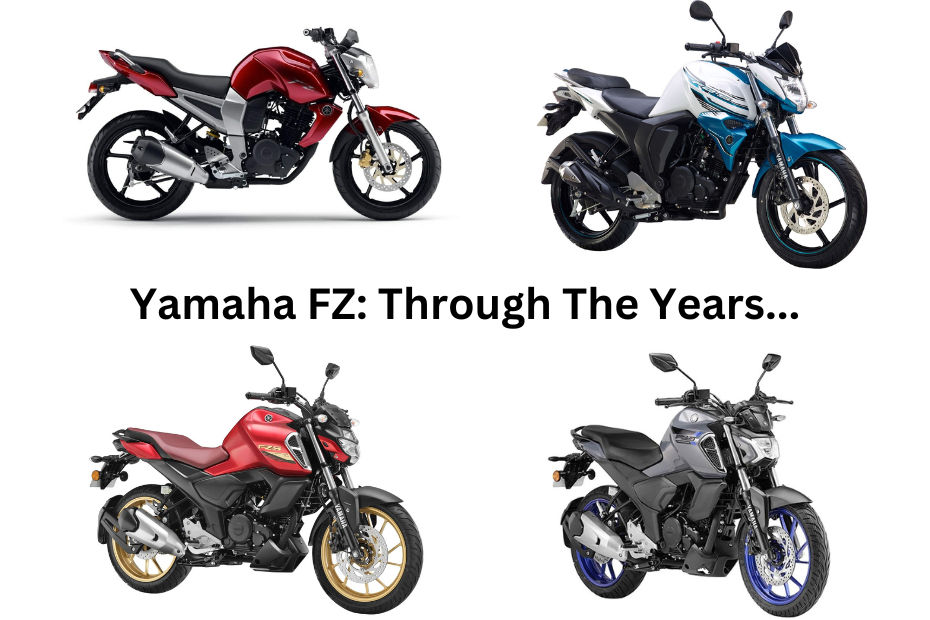Flashback Friday - Yamaha FZ: Indian Streetfighter With A Global Connect
Modified On May 5, 2023 03:01 PM By Sudipto Chaudhury for Yamaha FZ-FI V3
- 3277 Views
- Write a comment
The Yamaha FZ took the Japanese bikemaker out of a ‘commuter-only’ slump

Yamaha’s name is synonymous with performance, whether it be the RD350 and RX series bikes from way back when, or today’s R15 series. But between the RX heydays and R15 dominance was a lean period. Stretching a decade-and-a-half, it was punctuated by forgettable offerings like the YBX, Crux, and Fazer 125. But then came 2008, and with it the FZ16!

The first-gen FZ16 looked like a scaled-down version of the brand’s litre-class naked, the FZ1. With its muscular design, all-digital console and the 140-section rear tyre (the widest at the time), the FZ16 brought international design language to our streets. Its 153cc air-cooled motor made 14PS and 13.6Nm, which was par for the course. And the beefy chassis and grippy tyres gave it impecceble handling, far superior to any other bike in its class back in the day. And finally, its price tag – comparable with the 150s of the time – coupled with Yamaha’s solid build quality and reliable aftersales meant even those who balked at its lack of a kick start, couldn’t help but admire it. Besides, Yamaha also launched a stylised version of the FZ16 called the FZ-S, with additional features like a small flyscreen and larger two-piece seat.

The next generation, in 2014, brought with it massive changes. First was the introduction of fuel injection, tech which still wasn’t as widespread back then, so the bikes were now called the FZ-Fi and FZS-Fi. Complementing this were aesthetic changes, like a redesigned console, indicators, exhaust end can, and taillight. Unfortunately, though, the smoother-running engine was also downsized from 153cc to 149cc, bringing specs down to 13.1PS and 12.8Nm. The silver lining, though, was a claimed 14 percent gain in fuel efficiency, and a 3kg weight reduction, which made it the lightest in its class.

Moving now to the third-gen model launched in 2019; this, too, got subtle cosmetic changes, like a new LED headlight, redesigned fuel tank with tank extensions, new instrument console, new exhaust heat shield and tyre hugger. The FZ-S, meanwhile, got some chrome elements to set it apart. The engine specifications stayed unchanged, though Yamaha claimed it was now tuned for more low-end grunt. The most important addition, though, was single-channel ABS, as per the then freshly announced government rule. Then in 2021, the FZ range got a third retro scrambler-esque model, the FZ-X. This one, more crucially, also got bluetooth connectivity (though no navigation) which subsequently was adopted by the other variants as well.

And finally we have the fourth-gen models, which were launched recently. Starting with the standard FZ, it features a new headlight design with a central LED unit flanked by vertical LED DRLs (similar to the MT-09, curiously ). The engine specs stay the same, though it’s not BS6.2-complaint yet. Besides, Yamaha has also given it traction control, just like the MT-15 V2, R15 V4 and, yes, the FZ-X.
Summing up, the Yamaha FZ series started off as a sportier alternative to the 150cc offerings, a mantle which the MT-15 has today seamlessly donned. And in all its iterations since the original one, it’s clear that the FZ lost whatever performance edge it originally had, with Yamaha India’s focus once again shifting back to fuel efficiency. And yet, taking a spin on it today and sampling the refinement, you’ll be reminded why it’s still a sought-after model in the bikemaker’s portfolio.
